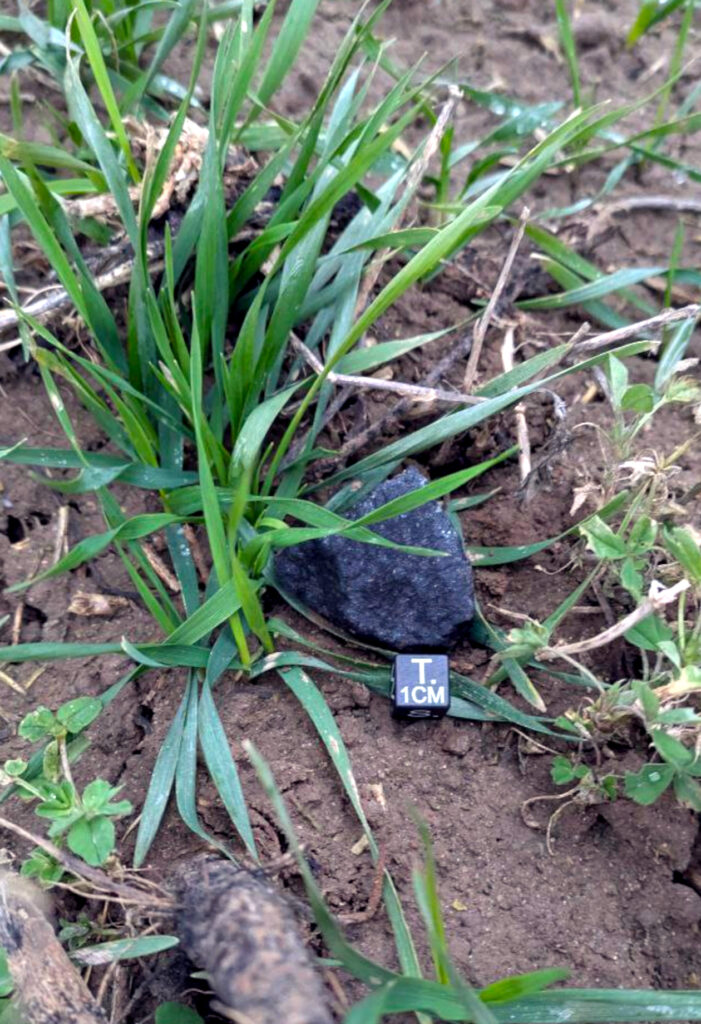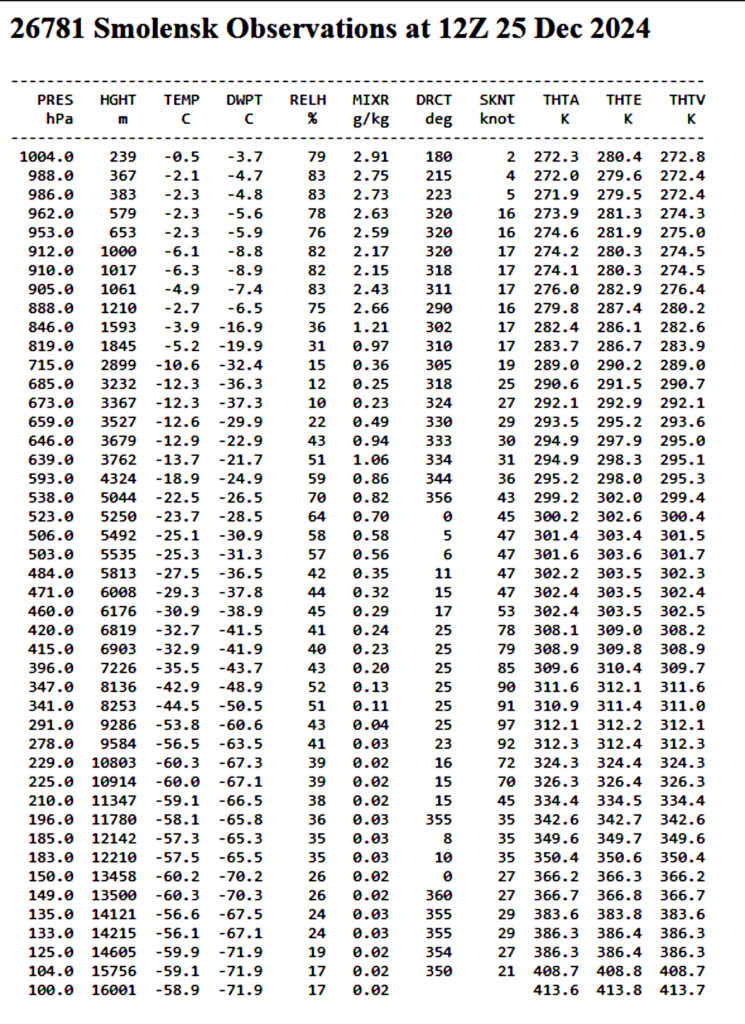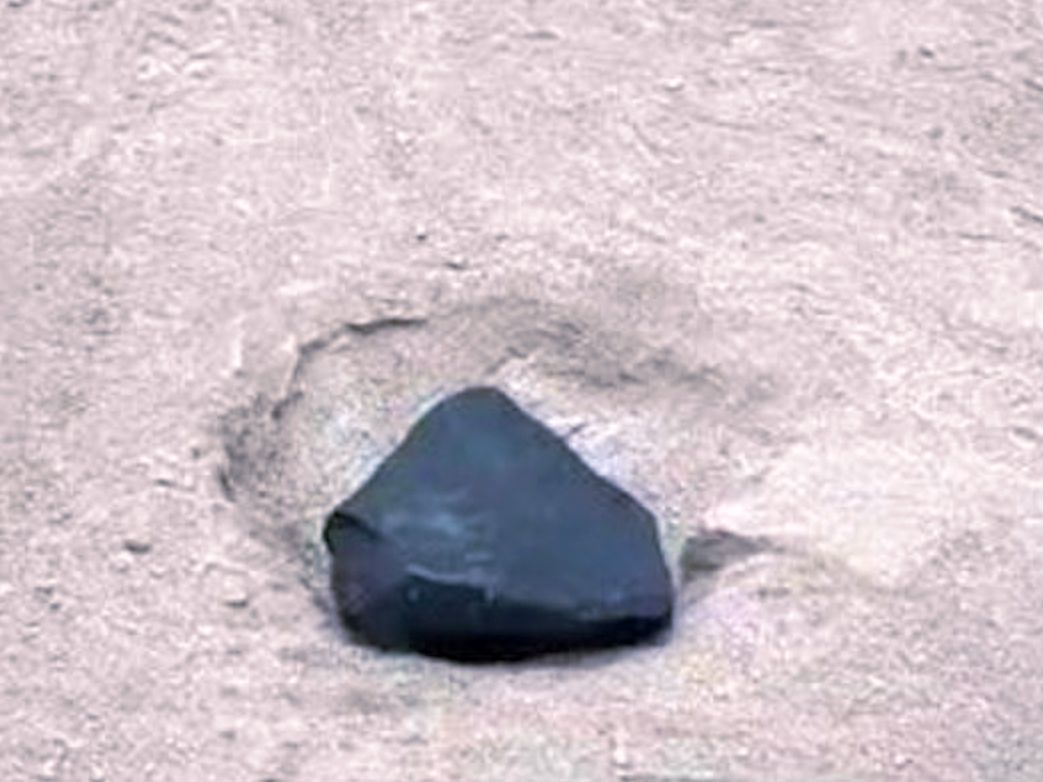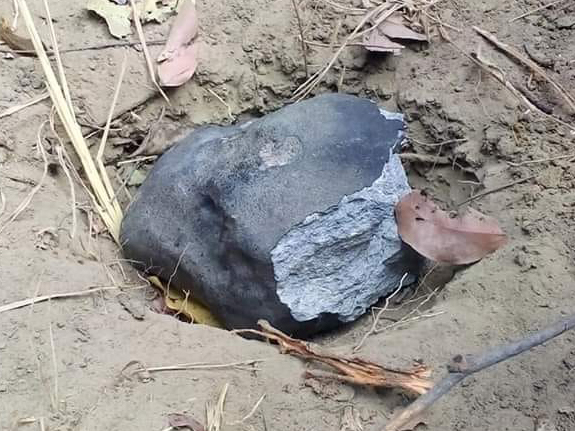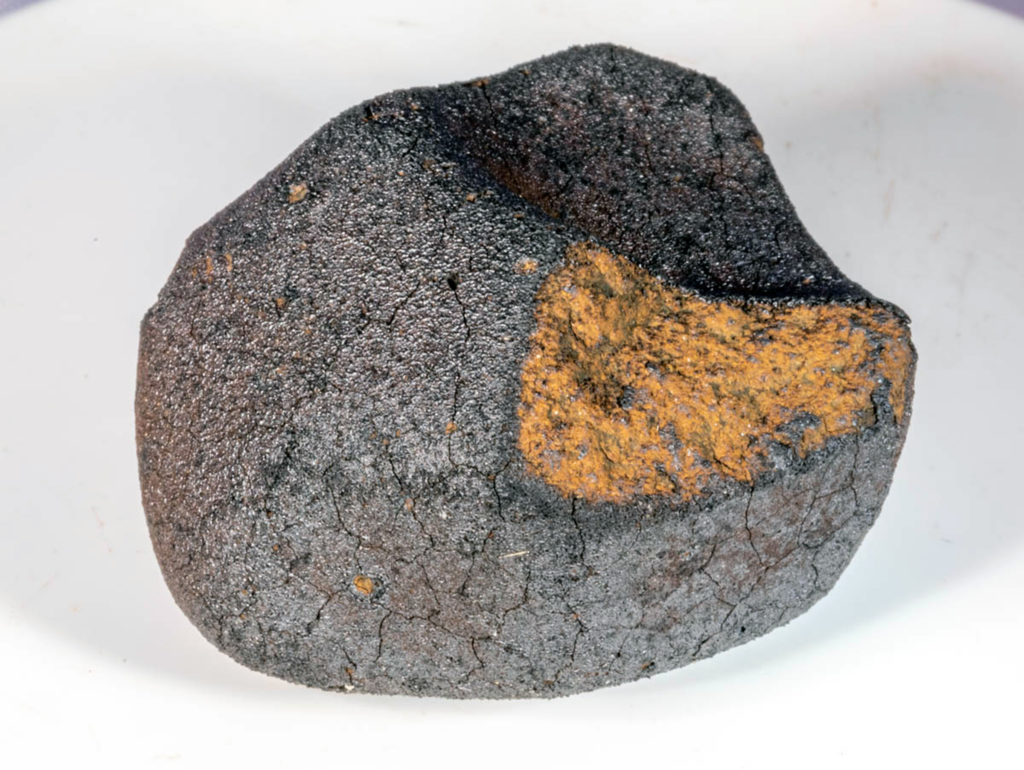SMALYAVICHY meteorite fall (~680 g, H6, S2) Woblast Minsk, Belarus on 25 December 2024 (14:29:15 UTC) east of Smalyavichy (Смалявічы)
Last update: 23 August 2025 (13:30 CEST)
On 25 January 2025 the first media reports about potential meteorite finds (H chondrite), were published citing members of the Minsk Planetarium. By 27 January four potential meteorite masses between 30 and 60 grams had been found near Smalyavichy/Smolevichi (Смалявічы). The first mass was found by Smolevichi resident Ilya Viktorovich Romanenko, an employee of a local factory. The 55.8-gram specimen has been handed over to Minsk Planetarium. Nearby, a 44.5-gram specimen was reportedly found on 25 January by UrFU’s Grigory Yakovlev. A second 31-gram mass was found nearby by Alexander Pastukhovich at location 54°01’24.3″N, 28°07’58.3″E, east of Ryabyi Slup, on 26 January 2025. Some meteorites were sent to Ural Federal University. These further finds were made: 62.4 g by Sergey Zhmurovski (found close to the fall location of the three specimens mentioned above), 93 g by Raisa Lukyanova, found around location 54°03’26.7″N, 28°09’02.2″E, and 8 g by A.Yarotau (BSU). Furthermore, additional finds have been inofficially reported. The largest mass which has been found by an unknown finder near location 54°03’34.4″N, 28°09’47.1″E on 27 January 2025 so far seems to be a 230-gram mass. Fall coordinates of several masses have been recorded by Alexander Mikulich, head of the Minsk Planetarium. The bolide was recorded from a height of 48 kilometers by at least three cameras (BYGayany, BYMinsk and BYAviator) of a Belarusian Meteor Network. The last of 15 observed fragment of the luminous trail was visible at a height of 19.8 km. A group of searchers by the Minsk Planetarium, the National Research Center for Ozonosphere Monitoring of the Belarusian State University and three members of a meteorite search team of the Ural Federal University (UrFU) had started to search the fields between Smolevichi and Zhodino. According to calculations meteorites could be found between Smalyavichy/Смалявічы, Ryaby Slup/Слуп (10–50 g), Prisynok/Присынок (50–150 g), Kalyuga/Калюга (150–300 g), Black Forest/Черный Лес (300–500 g), Vysokiye Lyady/Высокие Ляды (0,5–1 kg) and Zhodino (Жодзіна). The pre-atmospheric entry mass of the meteoroid apparently was about 100 kg and its velocity (Vg ~7-8 km/s) rather low. According to fragmentation events visible during the luminous trail it is assumed that a higher amount of meteorite masses might have fallen to the ground, among them three fragments weighing slightly more than 1 kg and about eight masses weighing between 200 g and 1 kg (three of ~300g and two of ~200 g). The calculations of the fall area which were based on two camera recordings were performed by Jiří Borovička, Pavel Spurný and Lukáš Shrbený of the Astronomical Institute of the Czech Academy of Sciences, were made public on 20 January 2025. The necessary wind model was provided by Dr. Radmila Brožková from the Czech Hydrometeorological Institute. As soon as the snow in the area melted the search for meteorites began. On 27 January 2025 the Belarusian Ministry of Natural Resources and Environmental Protection claims in a published statement that meteorites found in Belarus are considered “unique geological materials” and are subject to state registration by the Ministry of Natural Resources and Environmental Protection according to paragraph 3 of article 81 of the Code of the Republic of Belarus on Subsoil (Subsoil Code). Finders of meteorites are asked to inform the Ministry of Natural Resources and Environmental Protection. On 28 January 2025 Minsk Planetarium Head and head of the search team Alexander Mikulich reports the find of a 153.48-gram specimen (wet) showing clear signs of terrestrial weathering. It was found by Ruslan Zavadich near location 54°04’04.7″N, 28°10’12.6″E. This specimen, as well as other found masses, have unfortunately been exposed to magnets. Search activities were interrupted because of snow fall in the area. On 10 February Alexander Mikulich announced that the meteorite fall will receive the provisional name ‘Smalyavichy’ for its registration in the Meteoritical Bulletin Database. The application for registration was sent by scientists from Ural Federal University (UrFU) where some of the found meteorites were classified by Kseniya Dugushkina (RAS-UB and UrFU), G. Yakovlev (UrFU), V.V. Sharygin (SIGM and UrFU) and S. Berzin (RAS-UB and UrFU). UrFU’s search team, consisting of three men, had searched the fall area for about one week and then took their finds home to Yekaterinburg for analysis. According to Grokhovsky the found meteorites will be given back to Belarus once the analyses have been finished. On 17 March 2025 the confirmed fall was registered in the Meteoritical Bulletin Database as Smalyavichy. On 21 August 2025 three meteorite specimens of the fall were put on public display at the Minsk Planetarium.

The calculated ~10-km² fall area with the fall locations of some of the found meteorites. Image: Czech Academy of Sciences / Minsk Planetarium
We thank Evgeniy Trofimov for valuable information which helped to improve the quality of this article.
The 153.48-gram mass

153.48-gram mass in situ on 26 January 2025 (15:33 UTC+3). Photo: Yuri Harachka

A 153.48-gram specimen (wet). Photo: Y. Harachka/Alexander Mikulich

A 153.48-gram specimen (wet). Photo: Y. Harachka/Alexander Mikulich

Trailing side of the 153.48-gram specimen (wet). Photo: Alexander Mikulich

The 153.48-gram specimen (wet). Photo: Alexander Mikulich

The 153.48-gram specimen (wet). Photo: Alexander Mikulich
The 230-gram mass

A 230-gram wedge-shaped specimen showing first signs of terrestrial weathering. Photo: Alexander Mikulich

A 230-gram wedge-shaped and cracked specimen showing first signs of terrestrial weathering. Photo: Alexander Mikulich

A 230-gram wedge-shaped and cracked specimen showing first signs of terrestrial weathering. Photo: Alexander Mikulich
Other found masses

The first UrFU find (44.5 g) found by Grigory Yakovlev on 25 January 2025. Photo: UrFU
The first UrFU find (44.5 g) in situ. Photo: UrFU

A 63.38-gram specimen in situ. Photo: UrFU

A 63.38-gram specimen in situ. Photo: UrFU

The 55.8-gram specimen next to a 63-gram specimen. Photo: Sergey Yudaev
An authentic looking meteorite mass in situ. It seems to be the 31-gram one which was found by Alexander Pastukhovich at location 54°01’24.3″N, 28°07’58.3″E, east of Ryabyi Slup, on 26 January 2025. Photo: UrFU

The calculated fall area. Image: Astronomical Institute of the Czech Academy of Science

UrFU’s Grigory Yakovlev (left) and Alexander Pastukhovich (right) presenting one of their found masses on 25 January 2025. Photo: UrFU

The 55.8-gram (wet) specimen on a scale. Photo: UrFU
The 55.8-gram (wet) specimen. Photo: unknown
The 55.8-gram meteorite found on 31 January 2025 held by Sergei Yudaev. Video: Sergei Yudaev

The 63.38-gram (wet) specimen on a scale. Photo: UrFU
Sergei Yudaev finding a 11.3-gram specimen with a magnet at 10:20 UT on 31 January 2025. Videos: Sergei Yudaev

Photo: Sergei Yudaev
THE BOLIDE
The bolide heading in northeastern direction, recorded by three cameras (Gayany, Minsk and Aviator) of the Belarusian camera network. The three cameras caught only the second part of the luminous trail down from an altitude of 48 kilometres and the last fragment was detected at an altitude of 19.8 kilometres above the village Žaželka. Video: Minsk Planetarium
Close-up of the recording by the ‘Aviator’ camera north of Minsk showing the end of the luminous trail with the meteoroid’s fragmentation. Video: Minsk Planetarium
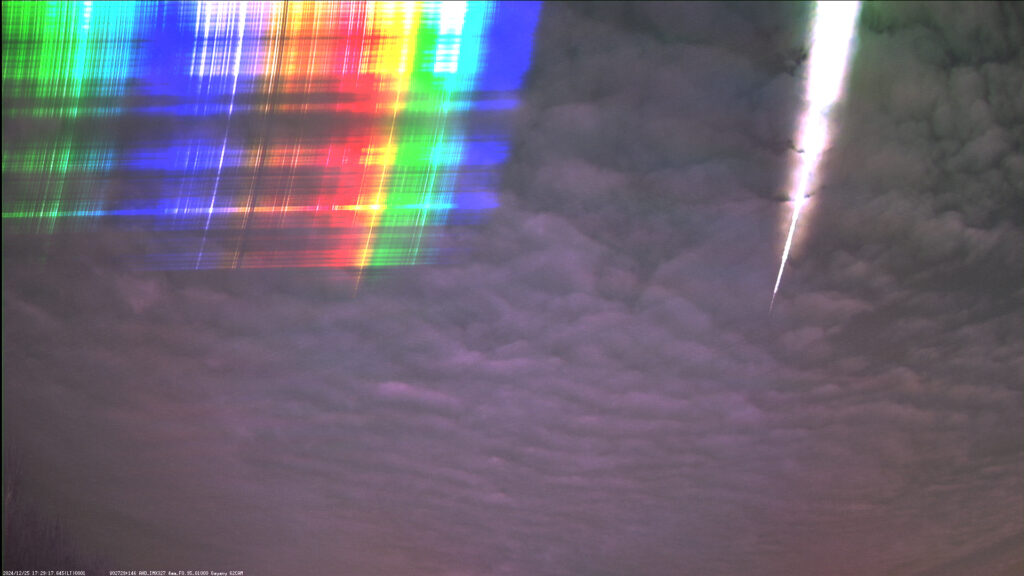
Spectra of luminous trail, recorded by the Gayany camera. Photo: Alexander Mikulich

Spectra of luminous trail, recorded by the Gayany camera. Photo: Alexander Mikulich

Spectra of luminous trail, recorded by the Gayany camera. Photo: Alexander Mikulich
Wind and weather data from Russian Smolensk weather station on 25 December 2024. Image: Alexander Kulich
Bolide captured with a by dashcam from Барановичах (Baranovichi), about 172.88 km southwest of the find location of a meteorite east of Smalyavichy (Смалявічы) and Ryabyi Slup. Video: unknown
Five dashcam videos recorded from Lithuania. Video 1 by Saulius Prakapavičius near Utena, video 2 by Aušrine Baltkojiene, video 3 by Ramunas Spejeras, video 4 by Kamilė Daubaraitė, video 5 by Evelina Bo and Rimantas Zi. Video collection above published on 26 December 2024 by Orai ir klimatas Lietuvoje PLIUS
Video of eyewitnesses discussing the appearance of the bolide. At 1:13 minutes running time the camera zooms in on the remaining trail of the bolide which has already be blown into a zigzag line by the high-altitude winds. At 2:19 minutes running time detonation booms can be heard in the distance. Video: unknown
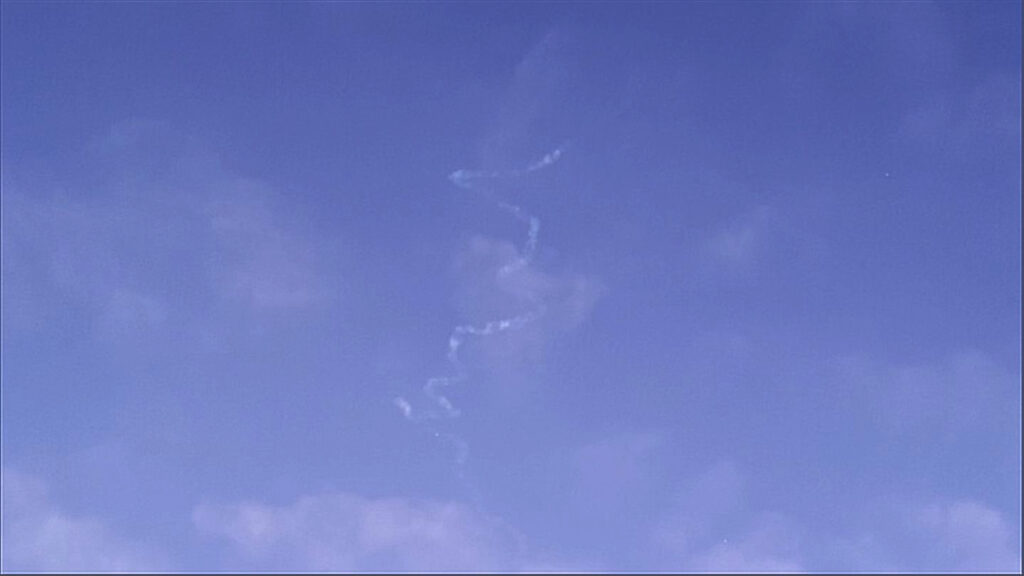
Bolide’s remaining trail. Screen capture from video above.
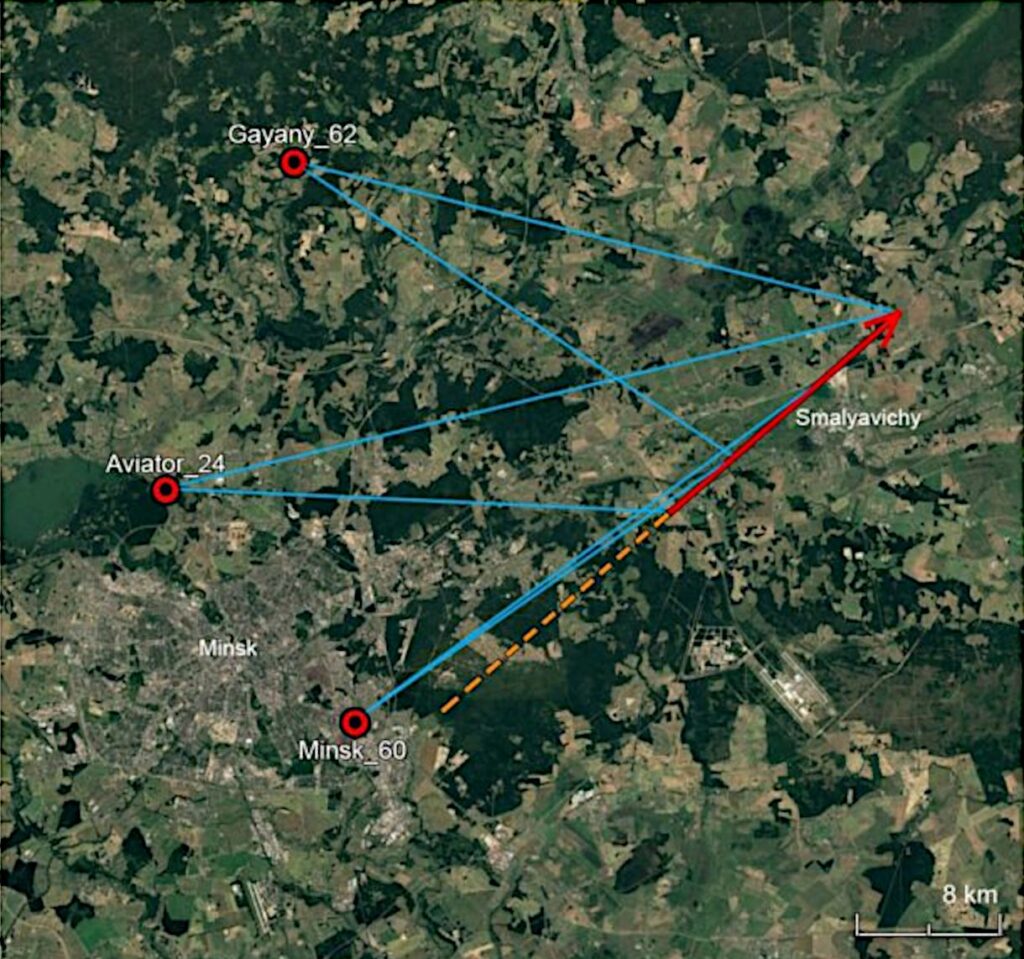
Luminous trail as captured by the three Minsk Planetarium cameras (top to bottom in map: Gayany, Aviator and Minsk). Image: Minsk Planetarium

Luminous trail as captured by the three Minsk Planetarium cameras (top to bottom in map: Gayany, Aviator and Minsk). Image: Astronomical Institute of the Academy of Sciences of the Czech Republic / Planetarium of Minsk

Trajectory of the luminous trail. Image: Astronomical Institute of the Academy of Sciences of the Czech Republic / Planetarium of Minsk
MEDIA
Video: OHT (25 January 2025)

